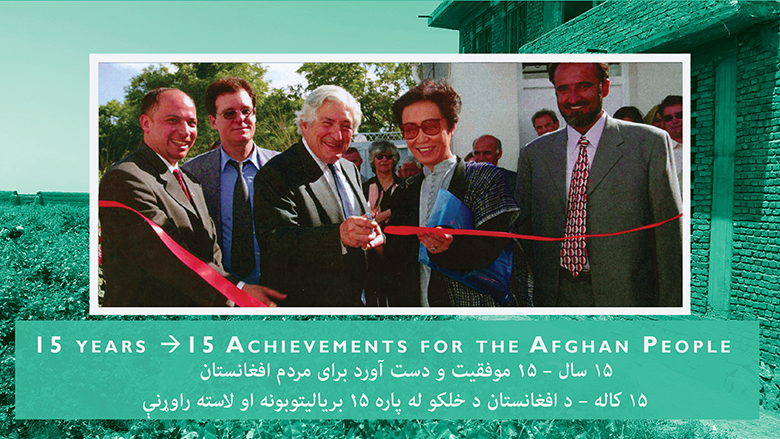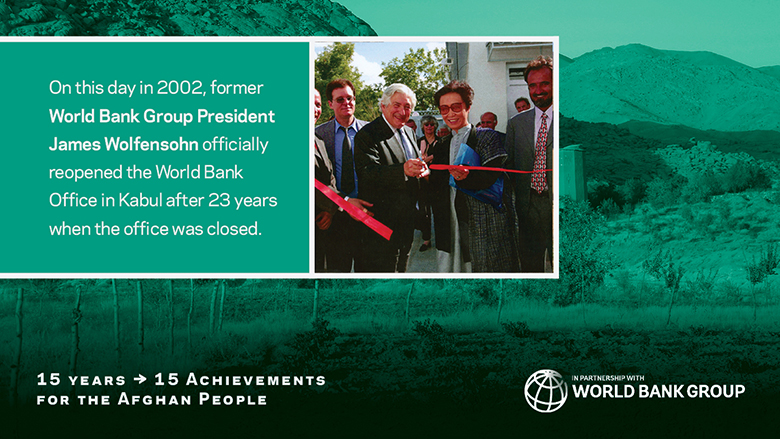 |
Achievement #1 On May 15, 2002, James Wolfensohn, the World Bank Group President at that time, officially reopened the World Bank Office in Kabul after 23 years of the office being closed. Since then, the Bank has supported Afghan government efforts in building effective and accountable institutions, expanding services to the Afghan people, and encouraging private sector development. We believe these are key fundementals for ensuring economic growth and prosperity in Afghanistan.
|
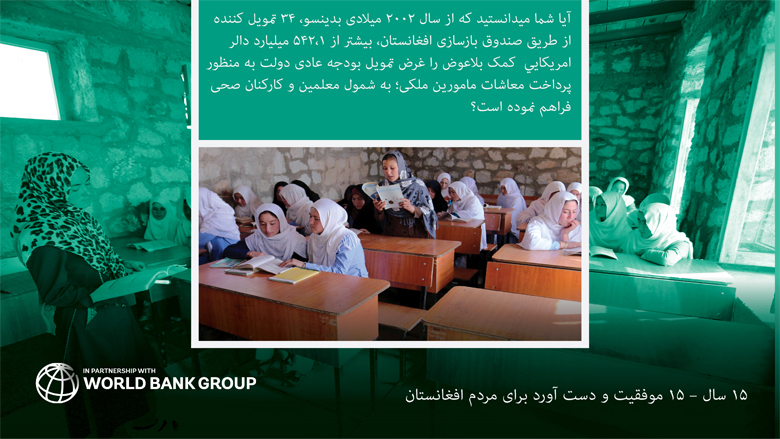 |
Achievement #2 The Afghanistan Reconstruction Trust Fund (ARTF) is a partnership between the international community and Government of Afghanistan to improve effectiveness of the development efforts. ARTF’s support for National Priority Programs (NPPs), operating costs of government operations, and the policy reform agenda is contributing to the achievement of the Afghanistan National Peace and Development Framework goals.
|
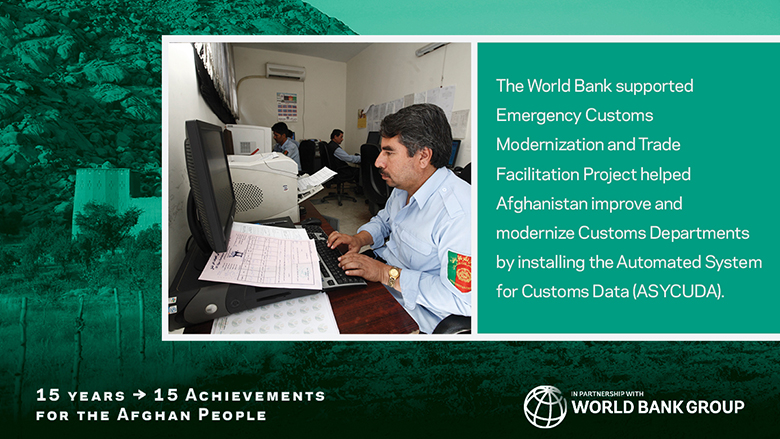 |
Achievement #3 The World Bank supported Emergency Customs Modernization and Trade Facilitation Project helped Afghanistan to improve and modernize Customs Departments by installing the Automated System for Customs Data (ASYCUDA). ASYCUDA has helped increase custom revenue collection, reduce transport related trade costs, stimulate trade, reduce corruption, and streamline customs procedures.
|
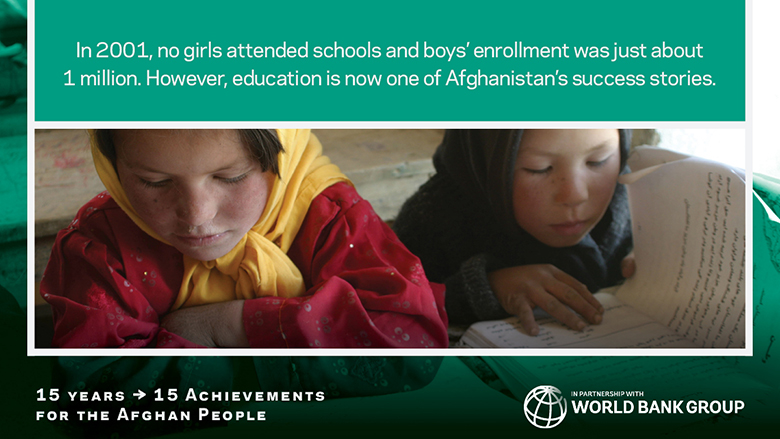 |
Achievement #4 In 2001, no girls attended schools and boys’ enrollment was just about 1 million. However, education is now one of Afghanistan’s success stories. School enrollment has increased to 8.7 million for general education in 2016, with girls accounting for 39 percent of school students.
|
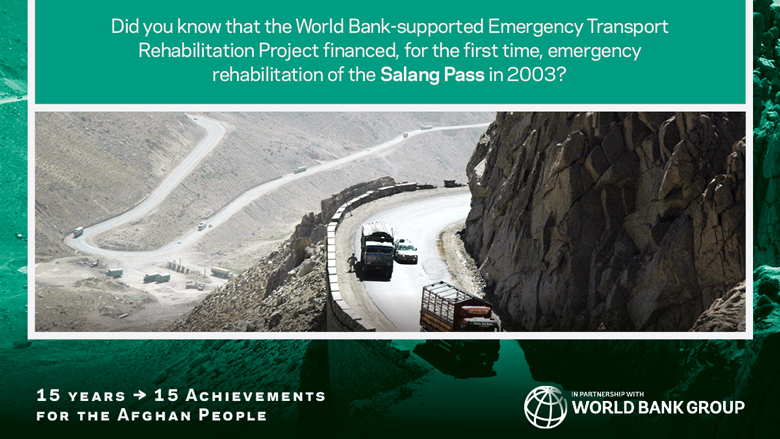 |
Achievement #5 Did you know that the World Bank-supported Emergency Transport Rehabilitation Project financed, for the first time, emergency rehabilitation of the Salang Pass in 2003? Built in 1964, the Salang pass, including the 2.67 kilometers tunnel, connects the northern provinces with the rest of Afghanistan. The ongoing Trans-Hindukush Road Connectivity Project supported by the World Bank aims to improve road transport connectivity across the Hindukush mountain range.
|
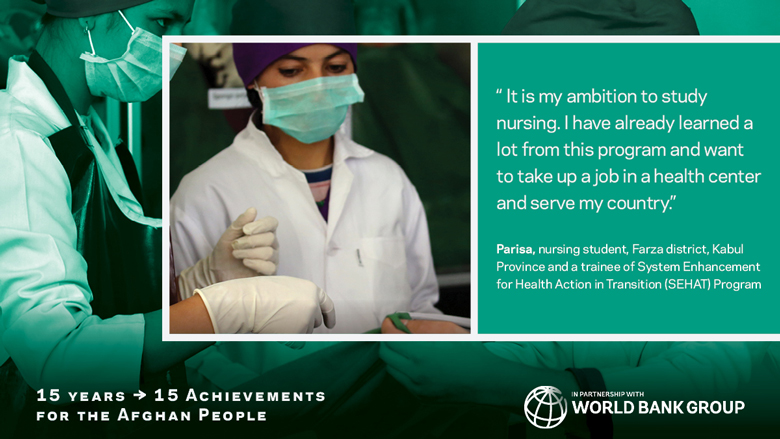 |
Achievement #6 " It is my ambition to study nursing. I have already learned a lot from this program and want to take up a job in a health center and serve my country." -- Parisa, nursing student, Farza district, Kabul Province and a trainee of System Enhancement for Health Action in Transition (SEHAT) Program.
|
Achievement #7 “In the past, when we bought something, it was very difficult to transfer materials to our homes. Now, the car comes right to our doors.”-- Hussain Ebrahimi, Meshe Payan village, Daykundi Province and a beneficiary of Afghanistan Rural Access Project (ARAP).
|
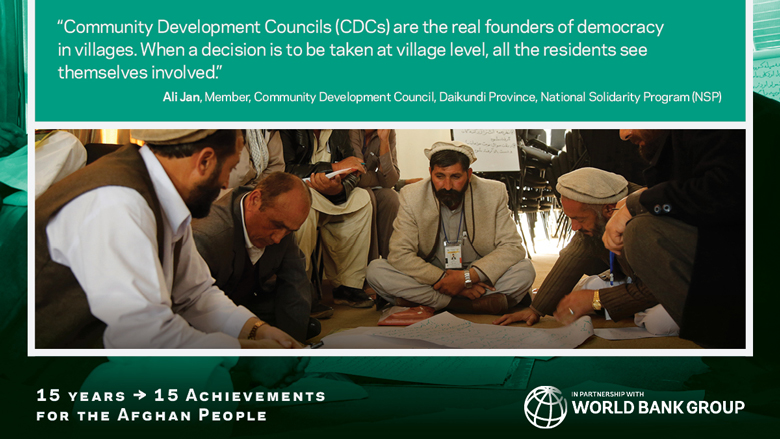 |
Achievement #8 "Community Development Councils (CDCs) are the real founders of democracy in villages. When a decision is to be taken at village level, all the residents see themselves involved." -- Ali, Member, Community Development Council, Daikundi Province.
|
Achievement #9 "By enhancing the quality and productivity of the association, the trainings have brought about significant improvements in the association’s business and transformed the lives of its members. " -- Mahboba Ibrahimi, Member, Balkh Women's Bright Future Social Association and a beneficiary of Afghanistan Rural Enterprise and Development Project (AREDP).
|
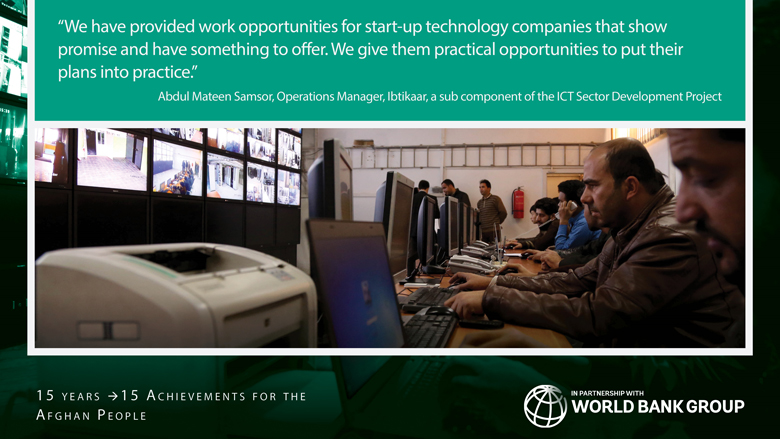 |
Achievement #10 Did you know that the World Bank-supported ICT Sector Development Project has helped develop the local IT industry by expanding the pool of skilled and qualified IT professionals, and supporting the incubation of ICT companies in Afghanistan?
|
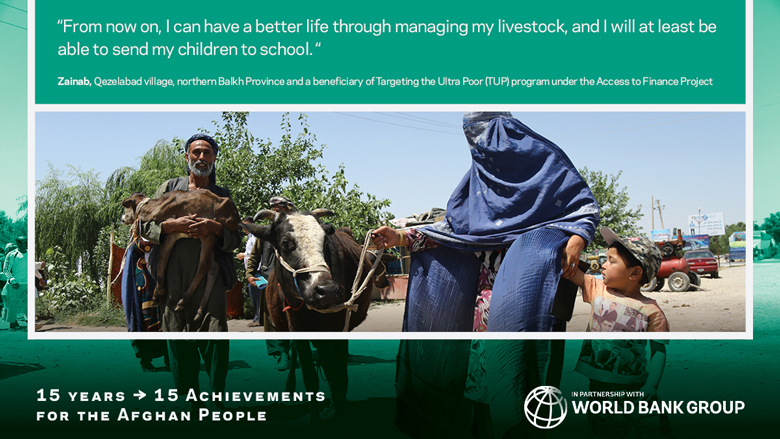 |
Achievement #11 "From now on, I can have a better life through managing my livestock, and I will at least be able to send my children to school. " -- Zainab, Qezelabad village, northern Balkh Province and a beneficiary of Targeting the Ultra Poor (TUP) program under the Access to Finance Project.
|
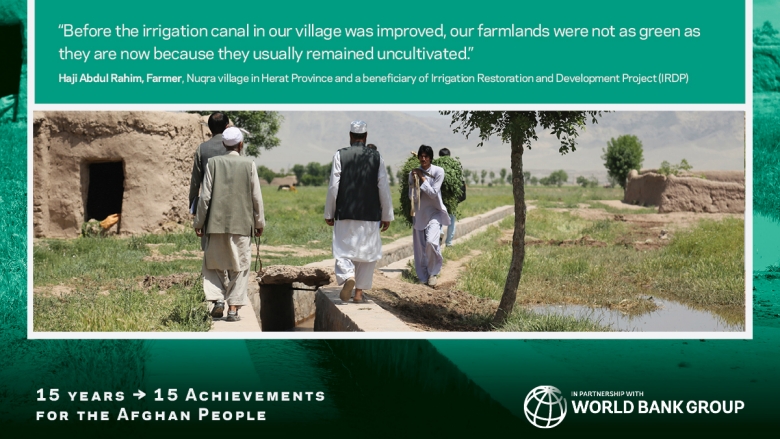 |
Achievement #12 "Before the irrigation canal in our village was improved, our farmlands were not as green as they are now because they usually remained uncultivated." -- Haji Abdul Rahim, Farmer, Nuqra village in Herat Province and a beneficiary of Irrigation Restoration and Development Project (IRDP)
|
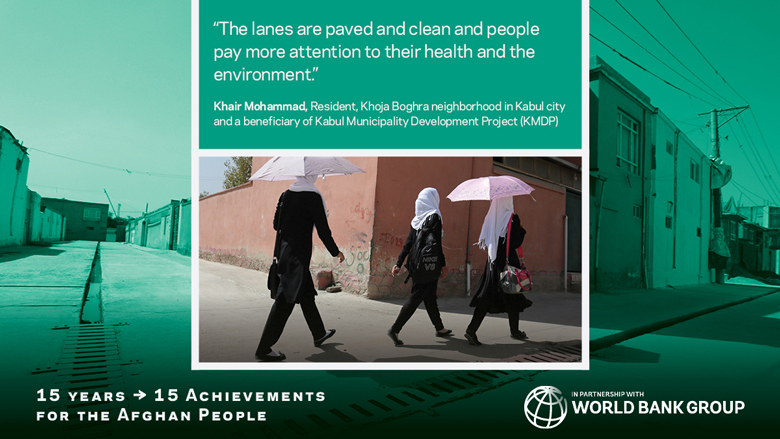 |
Achievement #13 "The lanes are paved and clean and people pay more attention to their health and the environment." -- Khair Mohammad, Resident, Khoja Boghra neighborhood in Kabul city and a beneficiary of Kabul Municipality Development Project (KMDP).
|
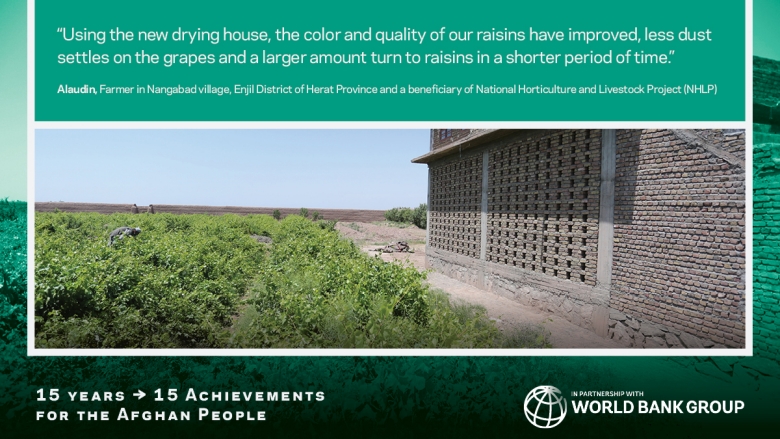 |
Achievement #14 "Using the new drying house, the color and quality of our raisins have improved, less dust settles on the grapes and a larger amount turn to raisins in a shorter period of time." -- Alaudin, Farmer in Nangabad village, Enjil District of Herat Province and a beneficiary of National Horticulture and Livestock Project (NHLP).
|
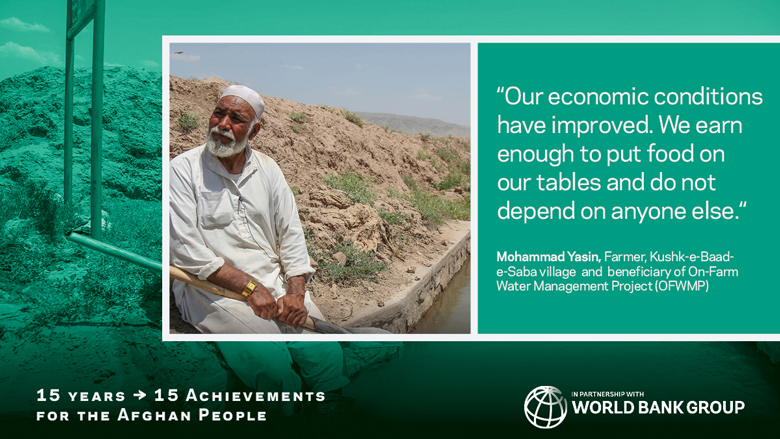 |
Achievement #15 “Our economic conditions have improved. We earn enough to put food on our tables and do not depend on anyone else.“ -- Mohammad Yasin, Farmer, Kushk-e-Baad-e-Saba village and beneficiary of the On-Farm Water Management Project (OFWMP).
|
Last Updated: May 15, 2017
